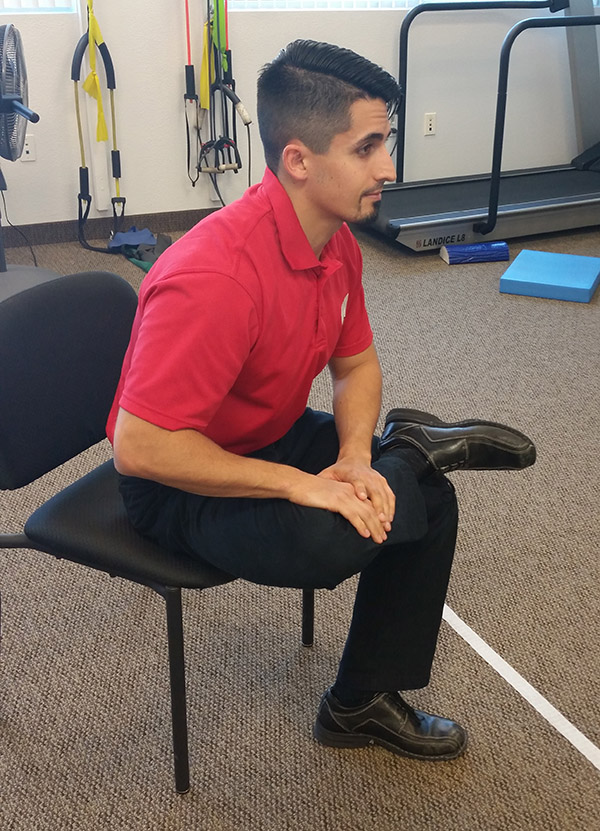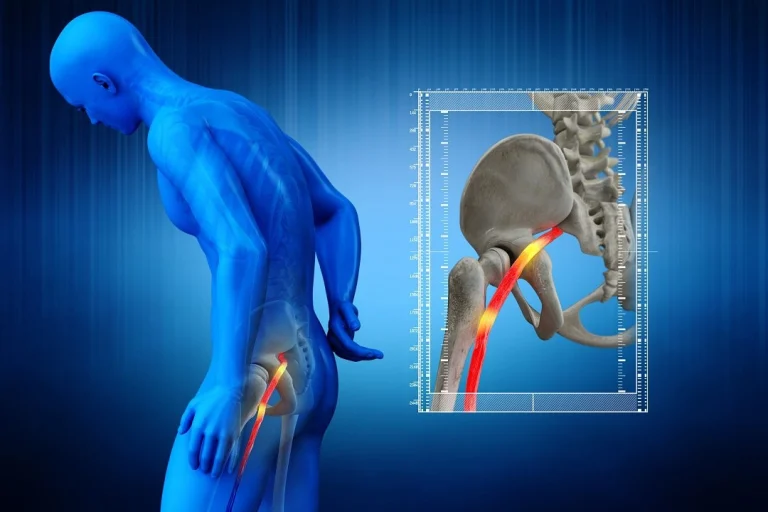Why Is My Sciatica Worse in the Morning? Understand Pain Dynamics
If you’re waking up to a sharp, shooting pain down your leg, you’re not alone. Many sciatica patients experience worsening symptoms in the morning, often wondering why this phenomenon occurs. According to recent studies, approximately 80% of people will experience back pain at some point in their lives, with sciatica being a common cause (American Chiropractic Association). Sciatica, characterized by pain that radiates along the sciatic nerve. It can indeed worsen during the early hours, affecting daily activities and quality of life.
Morning Aggravation: The Factors at Play
Morning aggravation of sciatica can result from a combination of factors:
1) Fluid Accumulation: Overnight, there can be an accumulation of fluid around the spinal discs and nerve roots. This fluid retention can lead to increased pressure on the sciatic nerve, resulting in heightened pain and discomfort upon waking up.
2) Sleeping Position: The position in which you sleep can affect sciatica symptoms in the morning. Sleeping in a position that places undue pressure on the lower back or buttocks, such as sleeping on your stomach with your legs straight, can exacerbate sciatic nerve irritation.
3) Muscle Weakness: Weakness in the core muscles and muscles supporting the spine can contribute to poor posture and spinal misalignment during sleep. This lack of muscular support can lead to increased pressure on the sciatic nerve and worsened morning sciatica symptoms.
4) Lack of Movement: During sleep, the body is relatively inactive, leading to stiffness and reduced circulation in the muscles and joints. The lack of movement can cause muscles to tighten and compress the sciatic nerve, intensifying pain upon waking.
5) Psychological Factors: Stress, anxiety, and poor sleep quality can all contribute to heightened pain perception and sensitivity. Individuals experiencing high levels of stress or anxiety may be more prone to experiencing worsened morning sciatica due to these psychological factors.
6) Diet and Inflammation: Some dietary choices, such as consuming foods high in sugar, processed fats, or inflammatory substances, can contribute to systemic inflammation. Inflammation can exacerbate nerve irritation and pain, potentially leading to increased morning sciatica symptoms.
7) Underlying Conditions: In addition to sciatica, individuals may have underlying spinal conditions such as degenerative disc disease, spinal stenosis, or herniated discs. These conditions can worsen morning sciatica due to their impact on nerve compression and spinal stability.
8) Age-related Changes: As individuals age, changes in spinal structure, such as disc degeneration and decreased flexibility, can contribute to morning sciatica symptoms. Age-related changes can make the spine more susceptible to nerve impingement and irritation during periods of inactivity, such as sleep.
Managing Morning Sciatica: Tips and Strategies
Gentle Stretching
Gentle stretching exercises can be an essential component of managing morning sciatica. These stretches help to alleviate muscle tightness, improve flexibility, and reduce the pressure on the sciatic nerve. Here are some specific stretching exercises that sciatica patients can incorporate into their morning routine:
Knee-to-Chest Stretch: Lie on your back with both legs extended. Bring one knee towards your chest, holding it gently with your hands. Hold the stretch for 20-30 seconds, then switch to the other leg. This stretch helps to release tension in the lower back and buttock muscles.

Piriformis Stretch: Sit on the edge of your bed or a chair with your feet flat on the floor. Cross one leg over the other, placing the ankle on the opposite knee. Gently lean forward while keeping your back straight until you feel a stretch in the buttock of the crossed leg. Hold for 20-30 seconds and then switch sides. The piriformis stretch targets the piriformis muscle, which can often contribute to sciatic nerve compression when tight.

Cat-Cow Stretch: Start on your hands and knees in a tabletop position. Inhale as you arch your back, lifting your head and tailbone towards the ceiling (cow pose). Exhale as you round your spine, tucking your chin to your chest and tucking your tailbone under (cat pose). Repeat this fluid movement for 1-2 minutes to gently mobilize the spine and relieve tension.

Hamstring Stretch: Sit on the edge of your bed with one leg extended and the other leg bent so that the sole of your foot rests against the inner thigh of the extended leg. Keeping your back straight, lean forward from your hips until you feel a stretch in the back of the extended leg. Hold for 20-30 seconds and switch legs. Tight hamstrings can contribute to lower back and sciatic nerve discomfort, so stretching them can be beneficial.

Child’s Pose: Begin on your hands and knees, then slowly sit back on your heels while extending your arms forward on the bed or floor. Rest your forehead on the surface and relax your entire body into the stretch. Hold for 30 seconds to 1 minute, focusing on deep breathing to promote relaxation and release tension in the lower back and hips.

It’s essential to perform these stretches gently and without forcing any movement that causes pain. If a stretch exacerbates your sciatica symptoms, discontinue that particular stretch and consult with a healthcare professional for personalized guidance. Consistency is key with stretching exercises, so aim to incorporate them into your daily morning routine to experience their full benefits in managing morning sciatica discomfort.
Gradual Movement
Avoid sudden movements or activities that put strain on the lower back. Instead, focus on gradual and controlled movements throughout the day.
Heat Therapy
Apply a heating pad or take a warm shower in the morning to relax muscles and reduce stiffness.
Proper Posture
Maintain good posture while sitting, standing, and lifting objects to reduce pressure on the spine and sciatic nerve.
By incorporating these strategies into your daily routine, you can effectively manage morning sciatica and experience relief from its symptoms.
Empowering Sciatica Patients with Information
At Medcareline.com, we understand the challenges that sciatica patients face, especially during the morning when symptoms can be particularly bothersome. That’s why we provide valuable resources and informational posts to help individuals better understand sciatica, its causes, and effective management strategies. By empowering patients with knowledge, we aim to enhance their ability to cope with sciatic pain and improve their overall quality of life.
Conclusion
In conclusion, morning aggravation of sciatica is a common issue faced by many individuals. Factors such as overnight disc changes, inflammation, and muscle stiffness contribute to this phenomenon. However, by adopting proactive measures such as gentle stretching, gradual movement, heat therapy, and maintaining proper posture, patients can effectively manage morning sciatica symptoms. Remember, knowledge is key in navigating the challenges of sciatica. Medcareline.com is here to support and empower you on your journey to better health and well-being.
Frequently Asked Questions
Q: Is it normal for morning sciatica to improve throughout the day?
A: Yes, it is common for sciatica symptoms, including morning aggravation, to improve as the day progresses. This improvement can be attributed to increased movement, reduced stiffness, and the body’s natural healing processes.
Q: Should I avoid certain sleeping positions to minimize morning sciatica pain?
A: Sciatica patients may find relief by avoiding sleeping positions that place excessive pressure on the lower back and sciatic nerve. Sleeping on your back with a pillow under your knees or on your side with a pillow between your legs can help maintain spinal alignment and reduce discomfort.
Q: Can morning stiffness in other joints contribute to worsened morning sciatica?
A: Yes, morning stiffness in other joints, such as the hips or knees, can indirectly impact sciatica by altering posture and movement patterns. Addressing overall joint stiffness through gentle stretching and regular exercise may help alleviate morning sciatica symptoms.
Q: Are there specific activities or exercises to avoid in the morning if I have sciatica?
A: Sciatica patients should avoid sudden, high-impact activities in the morning that can strain the lower back and exacerbate symptoms. Instead, opt for gentle stretching, walking, or low-impact exercises to gradually ease into the day and minimize discomfort.
Q: Does weather or temperature changes affect morning sciatica pain levels?
A: Some individuals with sciatica may notice that changes in weather or temperature can influence pain levels, although the scientific evidence for this association is limited. Keeping a pain journal and noting any correlations between weather changes and symptom fluctuations can provide insights into personal triggers.








Все, что вам нужно знать о ботоксе
межбровная морщина ботокс отзывы http://b-tox.store/ .
Чем опасны бородавки и как их удалять
удаление бородавок на ноге https://genitalnyeborodavki.store .
This content is excellent! Clear language, thorough coverage of the topic, and highly engaging. I learned a lot and enjoyed it. Definitely recommended!